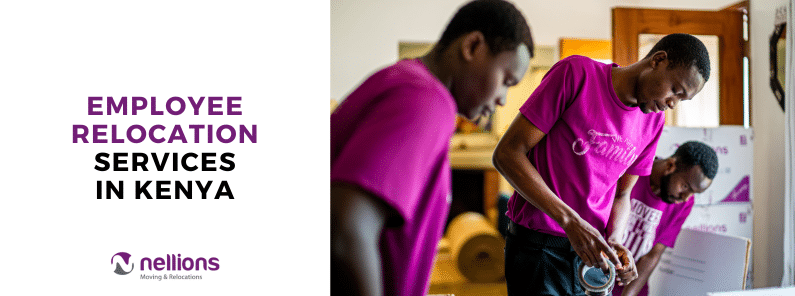Relocating for work provides an exciting opportunity for employees to advance their careers, explore new cities, and forge new relationships. However, moving can be quite a hassle, especially when you don’t know the right neighborhood for your living situation. Some companies assist their employees by managing moves on their behalf or offering financial support complete with packages such as ready housing, depending on their employee relocation policy.
Having the proper guidelines to prepare employees for a rental home search after they move for work helps save time, alleviates stress, and eases the transition of their families into a new environment. It also benefits organizations by improving retention rates due to high employee satisfaction and streamlining legal compliance with relevant rental and property authorities.
In this article, we cover essential tips from moving experts on how employees can prepare for a home search and find neighborhoods that are best fit for rent or buy. We also recommend sharing this information with DIYers getting ready for a rental search experience before moving houses.
-
Table of Contents hide
Researching the New Location
Employees planning to move to a new destination should consider how far from the workplace they want to live and whether the neighborhood and surrounding area suit their needs and preferences. A serene suburban community or a busy downtown area? Our moving experts provide local information and insights, further extended by our top neighborhoods in Kenya blog article.
No matter how beautiful and serene a neighborhood is, living there will quickly become challenging if it is inaccessible by road or has fewer transport options. When scouting for areas to relocate employees, inspect the new location’s transport infrastructure, including roads and pedestrian walkways, options for public transport, and the overall traffic situation.
It is advisable to test-drive your commute during peak hours to understand possible traffic snarl-ups better—you may even chart a faster route to work. For an informed decision, consider your routine travel itinerary, which may include the distance to church, school, and public social amenities in the new location.
-
The Community Atmosphere
A neighborhood’s general atmosphere and community spirit significantly affect employee’s sense of belonging and living experience. Attending community events and meetings and patronizing local businesses such as organic farmers’ markets can help employees gauge whether a neighborhood is a good fit for building lasting friendships, support networks, and a greater sense of belonging.
By getting to know the residents, you can get a sense of the culture, values, and social dynamics or meet individuals with whom you share much. With like-minded individuals in the community, you can enrich your knowledge of local services, shops, and ‘undiscovered places’ because they have the knowledge and experience to help ease your transition.
-
Affordability and Property Values
Your budget and financial goals are essential considerations that may significantly limit your home search options. Evaluate living costs in the prospective area, such as property values, average rent prices, groceries, utilities, and healthcare, to ensure they align with your budget and financial goals.
You should be able to assess whether moving is feasible by comparing these costs to your existing spending plan and financial circumstances. Relocating employees ought to be able to afford a comfortable living in the new area without undue strain or pressure.
-
Social Amenities and Recreation

A prospective area might be the right fit if it has amenities that support your hobbies, interests, and lifestyle preferences, such as nature parks, gyms, and community centers. Whether you love indoor or outdoor activities, the availability of these amenities and facilities can significantly improve the quality of your daily life. Ensure you can access certain products and services from your home if they are essential to you.
Once you know what social amenities and recreational facilities are available, you will need less time to transition to your new home. Experts also recommend keeping an eye on current and future developments in the area as they can enhance or detract from the neighborhood’s appeal and your living experience.
-
Lifestyle and Cultural Fit
Each neighborhood has a unique character and cultural mood; some are family-oriented, and others have an artistic scene or vibrant nightlife. To find the best fit, you might want to think about the community’s values, personal interests, and lifestyle preferences. Do you prefer a quieter, family-friendly environment or a bustling scene in an entertainment district? Understanding your lifestyle and social-cultural preferences will help you select the right neighborhood to move to.
-
Safety and Security
Examining the crime rates, local law enforcement, and the general climate-related security updates and measures for your prospective area can help ensure a safe living environment for you and your loved ones. You can find the crime statistics for the new neighborhood by narrowing your search in online resources for security risks associated with the specific location you intend to move to.
With a quick look at the statistics, you can determine which neighborhood has a moderate crime rate and is least susceptible to natural disasters such as flooding or earthquakes. This equips organizations and employees to make informed house-moving decisions.
-
Future Growth and Potential for Development

Researching planned or ongoing developments, infrastructural initiatives, and economic growth can help you better understand the neighborhood’s prospects and make more educated decisions about its growth potential. If you intend to relocate again in a few years, consider the possible increase in property value in the neighborhood.
Additionally, consider property taxes and housing laws, as they will affect your decision and costs. Conducting comprehensive research on the housing market can provide valuable insights into a given place’s investing possibilities and raise your bargaining power. It also helps you avoid making expensive mistakes by enabling you to recognize any potential hazards associated with buying or renting in a given location.
-
Daily Life Aspects
After you have selected an area or have finalized your decision, it is advisable to walk or drive around the new area and take in the neighborhood’s look and feel at different times. This will give you an idea of population congestion, potential disturbances such as noise from churches within the area, natural lighting and visibility, and the presence or absence of police patrols, among other crucial aspects of daily life.
For employees with families, the perfect neighborhood will include quality public and international schools for their children. To gain further insight into your children’s educational opportunities in the schools, you can visit on open days or look up ratings and reviews online.
-
Health and General Wellness
Residents’ general health and well-being are enhanced by their proximity to medical facilities, green areas, and clean surroundings. Taking these things into account is essential if you want to live a high-quality life and ensure that you and your family have the means to continue being happy and healthy.
Having licensed doctors and other healthcare professionals close to your home can improve the quality of life for your family, especially if you have elderly or young folks living with you. On the other hand, specific amenities that guarantee overall health and well-being—like parks for kids, places to go for walks, and opportunities to interact with neighbors—must be considered when selecting a neighborhood.
How to be the Best Tenant Candidate
The rental market can be quite competitive sometimes, especially in highly sought-after neighborhoods. Landlords in these areas receive many rental applications and have many tenant options. For a better chance of being selected and for legal compliance purposes, especially for international employees, it is best to be prepared with the following;
- Proof of employment – includes employer name, office location, and job title.
- Pet preference – if you are moving with a pet
- Rental reference – from previous landlords
- Credit history
Conclusion
For many individuals, identifying the ideal neighborhood is crucial to having the ideal residence and eventually, perfect work-life balance. Selecting the finest neighborhood for you and your family will be easier if you consider what factors make a location ideal. Since everyone has different interests and goals, a location that is good for one person may not be for another.
Choosing a home in the perfect neighborhood to move into can be daunting, yet it can also be an exciting journey full of learning. By considering these tips and advice and connecting with Nellions for expert local insights and relocation services, your employees can find the best place to live and a new adventure.











